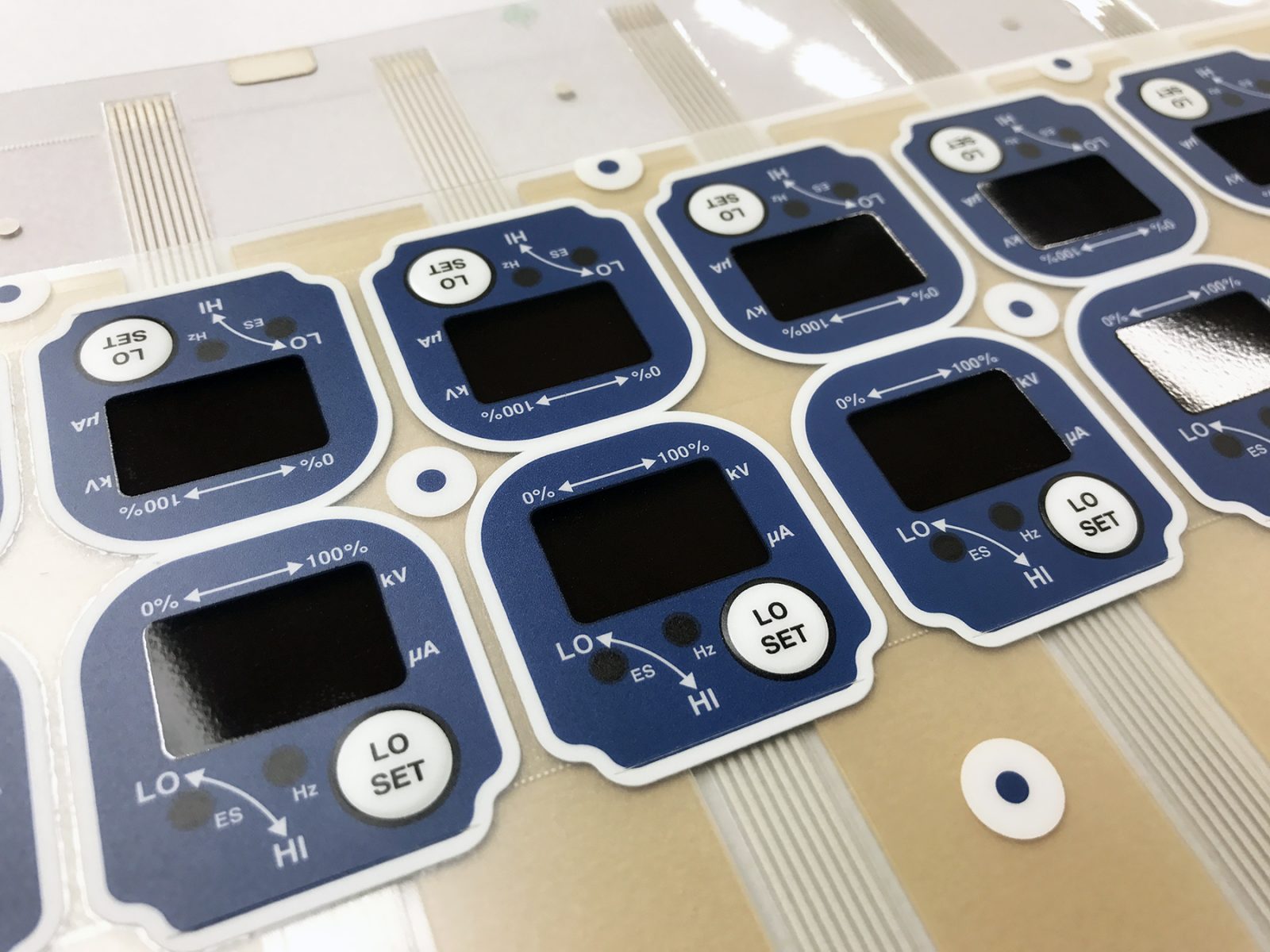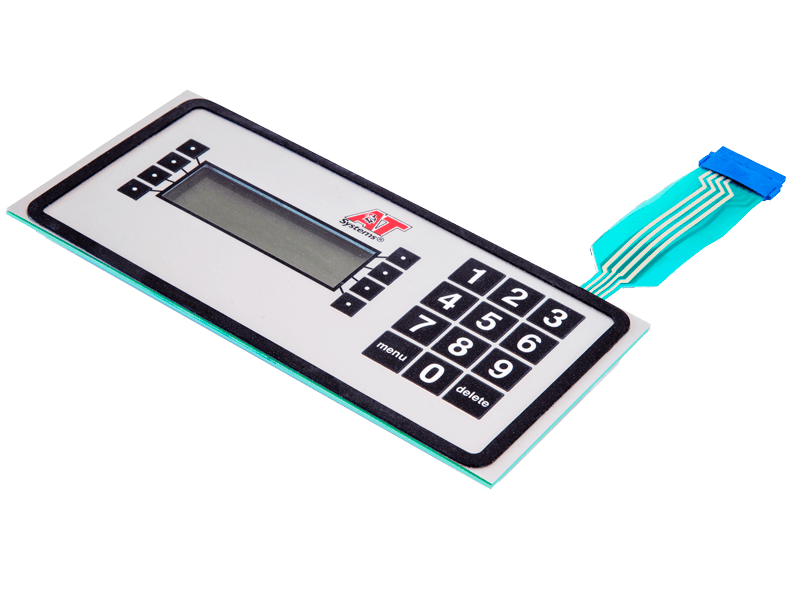The Ultimate Source on Membrane Switches Over: Design, Functionality, and Applications
Membrane changes function as a fascinating intersection of design and functionality, playing an essential duty in modern individual interfaces across numerous markets. This source unloads the important elements that add to their performance, including visuals overlays and circuit traces, while additionally elucidating the systems behind their pressure activation. As we discover the diverse applications of membrane switches, it comes to be obvious that their flexibility and durability are vital in atmospheres ranging from healthcare to consumer electronic devices. Nonetheless, the nuances of their style and operational concepts may disclose even deeper insights worth thinking about.

Recognizing Membrane Layer Switches
Membrane layer buttons are a kind of individual interface innovation commonly utilized in different digital devices, characterized by their slim, versatile style and capability. These switches contain several layers that consist of graphic overlays, sticky layers, and wiring, allowing a effective and portable user interface for individuals. They can be discovered in devices, medical gadgets, and industrial control panels, giving a trustworthy approach for user interaction.
Among the main advantages of membrane layer switches is their ability to withstand contaminants such as dirt and dampness, making them ideal for atmospheres where resilience is vital. Their low-profile layout enables for seamless integration right into different applications, while the customizable graphic overlays enhance individual experience by offering clear aesthetic comments. Additionally, membrane switches can accommodate a range of innovations, such as tactile feedback and backlighting, additional enhancing their functionality.
The manufacturing procedure for membrane changes typically entails display die-cutting, printing, and lamination techniques, making sure accuracy and consistency in manufacturing. Overall, membrane layer switches over stand for a effective and flexible service for modern-day digital devices, combining functionality with visual appeal in interface layout.
Secret Components and Style Aspects
A selection of vital elements and style elements come with each other to develop a reliable membrane switch. At the core, the graphic overlay offers both functional and visual objectives, offering an user-friendly user interface while securing inner components from environmental aspects. The choice of products, usually polyester or polycarbonate, influences durability and responsive feedback.
Under the overlay, the sticky layer ensures the button sticks securely to the substratum, which can be steel, glass, or plastic. The spacer layer is critical, as it preserves the essential gap between the circuit and the overlay layers, permitting reliable actuation. Membrane Switches. Circuit traces, usually made from conductive ink or adhesive, are published on a flexible substratum, making it possible for electrical signals to be transferred when pressure is used
Layout factors to consider also consist of the arrangement of tactile domes or embossing that give physical feedback to the user, enhancing the overall experience. Additionally, the format and spacing of the switches must be optimized for convenience of usage, making sure that customers can navigate the interface without effort. In general, these parts and design elements work synergistically to produce a reliable, practical membrane switch customized to particular applications.
Performance and Operation System
At the heart of reliable functionality for membrane switches exists their operational mechanism, which promotes customer communication with a straightforward yet efficient design. These buttons run on the concept of pressure activation, where a user applies pressure to a marked location of the button (Membrane Switches). This activity compresses the layers of the switch, completing an electrical circuit that sends a signal to the linked tool
The building and construction normally includes a top visuals layer, a glue their explanation spacer layer, and a lower circuit layer, which collectively form a durable user interface. When pressure is applied, the top layer collapses versus the lower circuit layer, permitting conductive traces to connect. This layout not just allows clear tactile responses yet likewise makes sure durability and reliability, as the buttons are often immune to dirt and wetness.
Additionally, the adaptability of membrane changes permits assimilation with different technologies, consisting of LED indicators and microcontrollers, boosting their performance. By offering a structured interface that minimizes mechanical wear, membrane layer switches over remain a preferred choice in applications ranging from consumer electronics to industrial devices, guaranteeing optimum efficiency and user satisfaction throughout varied atmospheres.
Kinds Of Membrane Layer Switches

Another considerable group is brightened membrane buttons, which include backlighting to enhance visibility in low-light conditions. These switches are often used in control panels and control panels where clear presence is crucial.
Furthermore, there are custom-made membrane layer switches designed to meet specific dimensional, graphical, and practical needs. These modifications can consist of unique forms, shades, and designs, permitting for smooth assimilation into numerous tools.

Applications Throughout Various Industries
Exactly how do membrane switches enhance capability across varied industries? In the medical sector, membrane layer buttons play a critical function in devices such as analysis equipment and person tracking systems, where integrity and simplicity of cleaning are vital.
In the automobile sector, membrane layer buttons are frequently utilized in dashboards and control board, offering instinctive controls that enhance driver security and convenience. The consumer click to investigate electronic devices industry additionally gains from their lightweight and personalized features, allowing streamlined designs for mobile phones and home devices.
In addition, membrane buttons locate applications in commercial automation, where they contribute to efficient machinery procedure and monitoring systems. Their resistance to dust and wetness guarantees capability popular problems (Membrane Switches). Additionally, the food and drink industry employs membrane switches for equipment control, where hygiene and resilience are essential
Verdict
Finally, membrane switches represent an essential development in interface innovation, defined by their unique design and functionality. Their essential great site components, including graphic overlays and circuit traces, add to their operational effectiveness with pressure activation. The adaptability of membrane layer switches over promotes their application throughout diverse markets, from medical tools to consumer electronics. This thorough understanding reinforces the importance of membrane layer buttons in boosting product usability and resilience in modern technical atmospheres.
Membrane changes serve as an intriguing junction of style and functionality, playing a critical role in modern-day user interfaces throughout different industries.Membrane buttons are a type of individual interface technology widely made use of in various digital devices, identified by their thin, flexible layout and functionality.At the heart of reliable functionality for membrane layer switches over lies their operational device, which helps with customer communication through an easy yet effective style. These buttons run on the concept of stress activation, where a customer uses force to an assigned location of the switch.In conclusion, membrane layer switches represent an essential technology in user interface modern technology, defined by their one-of-a-kind design and performance.
Comments on “Learn About the Ecological Benefits of Using Membrane Switches in Electronic Devices”